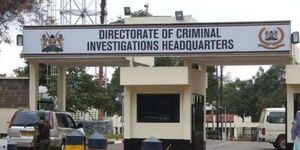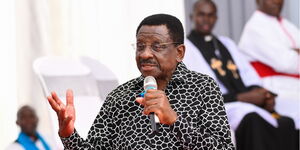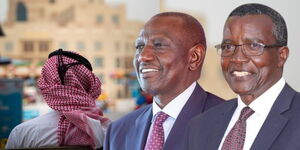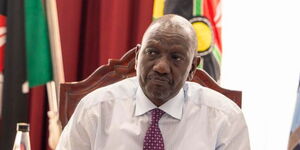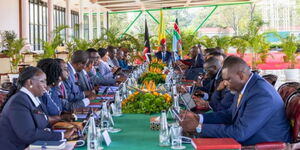President William Ruto has laid out an elaborate Ksh 5 trillion blueprint to reshape Kenya's future in what he projects will be a decade-long transformation built on massive investments.
Speaking during the State of the Nation address in Parliament on Thursday, November 20, the President outlined four key sectors which he say will determine the country's destiny for the long term.
The transformation agenda revolved around massive investment in the Kenyan people, Agriculture, energy and infrastructure.
Human capital
For starters, the President began by emphasising the need to invest in human capital. Ruto noted that the country's education budget spiked from Ksh490 billion in 2021 to over Ksh700 billion this year with the funds mainly used to support reforms, including better school infrastructure and hiring of more teachers and trainers.
To make the country more competitive in science and technology, the President announced the creation of the State Department for Science, Research and Innovation, whose role will be to strengthen STEM training and nurture a new class of engineers and innovators capable of driving the country's future.
Ruto also committed to raising funding research from the current 0.8 per cent of the country's GDP to 2 per cent to bridge a shortfall of Ksh Ksh180 billion.
Agriculture
Secondly, the president turned to Kenyan's international trade as he emphasised on the need for the country to shift from a net importer to an exporter of goods and services. While highlighting the country's staggering food import bill which stands at Ksh500 billion, Ruto outlined a sweeping water and irrigation plan to boost food security.
The irrigation plan comprises the construction of 50 mega dams, 200 medium and small dams and thousands of microdams across the country. .
According to the President the investments are set to bring in at least 2.5 million acres under irrigation within the next five to seven years to turn water-scarce areas into productive agricultural hubs.
In terms of location, Ruto targets areas across the Republic, from High Grand Falls on the Daua River in Mandera to Soin Koru in Kisumu, Rumuruti in Laikipia, Kokwanyo in Homa Bay, Thuci in Embu and Tharaka-Nithi. Expanded irrigation will not only secure food supplies, but will also fuel agro-industrialisation by providing quality raw materials for special economic zones.
Energy Development
The next pillar in Ruto's transformation agenda is energy development, which the President described as the lifeblood of a modern economy.
Since the country's power capacity of 2,300MW was below what the country needed to support digitisation, industrialisation, e-mobility and emerging technologies, Rito announced a plan to generate an additional 10,000MW of power within the next seven years using Kenya’s vast renewable resources, including geothermal, wind, hydro, solar, and nuclear.
Transport
Perhaps the most ambitious pillar mentioned by the President was in the transport sector as he outlined plans to conduct a massive upgrade of the country's transport and logistics network, which he described as the backbone of national competitiveness.
According to the President, while the country has only built 22,000 kilometres of paved roads in seven decades, the government was intent on rejuvenating a network of 2500 kilometres of highway for dualling and 28000 kilometres of roads to be tarmacked over the next 10 years.
Ruto proceeded to identify an elaborate list of additional roads earmarked for expansion, including Muthaiga–Kiambu–Ndumberi, Machakos Junction–Mariakani, Mau Summit–Kericho–Kisumu, Kisumu–Busia, Athi River–Namanga, and numerous others across all regions.
Still on infrastructure, the president also announced plans to modernise the Jomo Kenyatta International Airport, the Mombasa and Lamu ports and address challenges at the Kenya airways.
The government also intends to kick off the extension of the Standard Gauge Railway from Naivasha to Kisumu and eventually to Malaba, linking Kenya more effectively with regional markets.
The President also announced plans to modernise Jomo Kenyatta International Airport, the Mombasa and Lamu ports, and address challenges at Kenya Airways. In January 2026, the government will begin extending the Standard Gauge Railway from Naivasha to Kisumu and eventually to Malaba, linking Kenya more effectively with regional markets.
More significantly, the president acknowledged that the four priorities - human capital, agriculture, energy and infrastructure would require at least Ksh5 trillion to implement - a figure he admitted looked realistic on paper.
"These four projects are our national imperatives; commitments we must embrace without hesitation. Not because they are easy. Not because they are cheap. But because they are absolutely necessary. Because they are worthy. This is the assignment of our generation; this is the purpose of this administration and this parliament, the 13th Parliament, and this is the moment we must rise up to," Ruto said in his speech.

